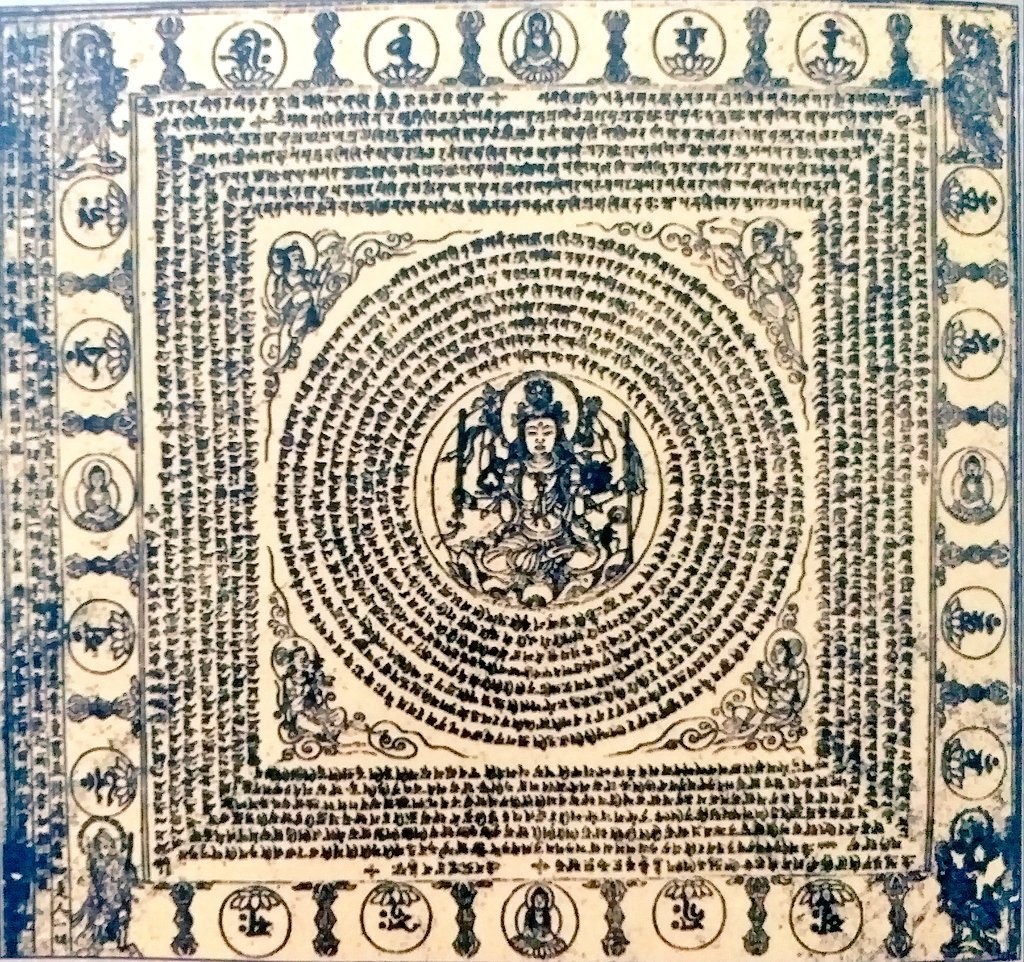Sanskrit and South East Asia
Sanskrit’s reach extended beyond India to Cambodia, Indonesia, Myanmar, Thailand, and Vietnam 2000 years ago.
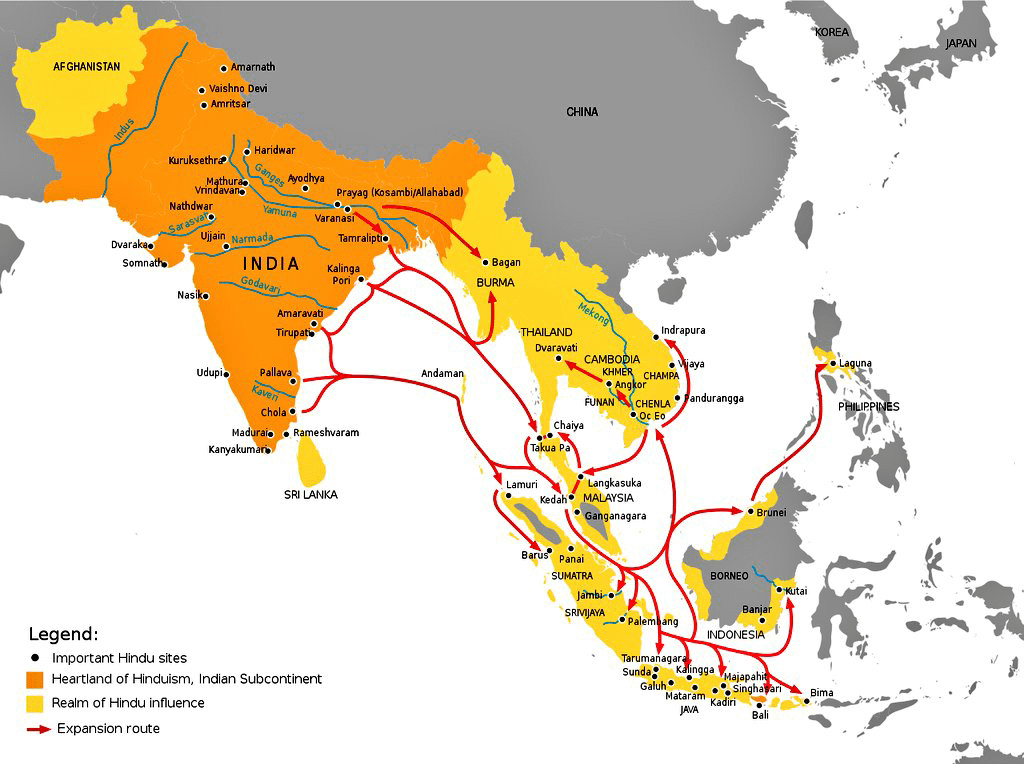
The earliest surviving Sanskrit inscription, the Vo Canh inscription, was discovered near Nha Trang, Vietnam, and dates back to the 3rd century CE. It mentions the granddaughter of a king, indicating a matrilineal society.
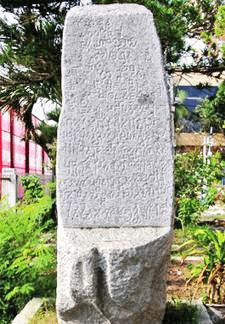
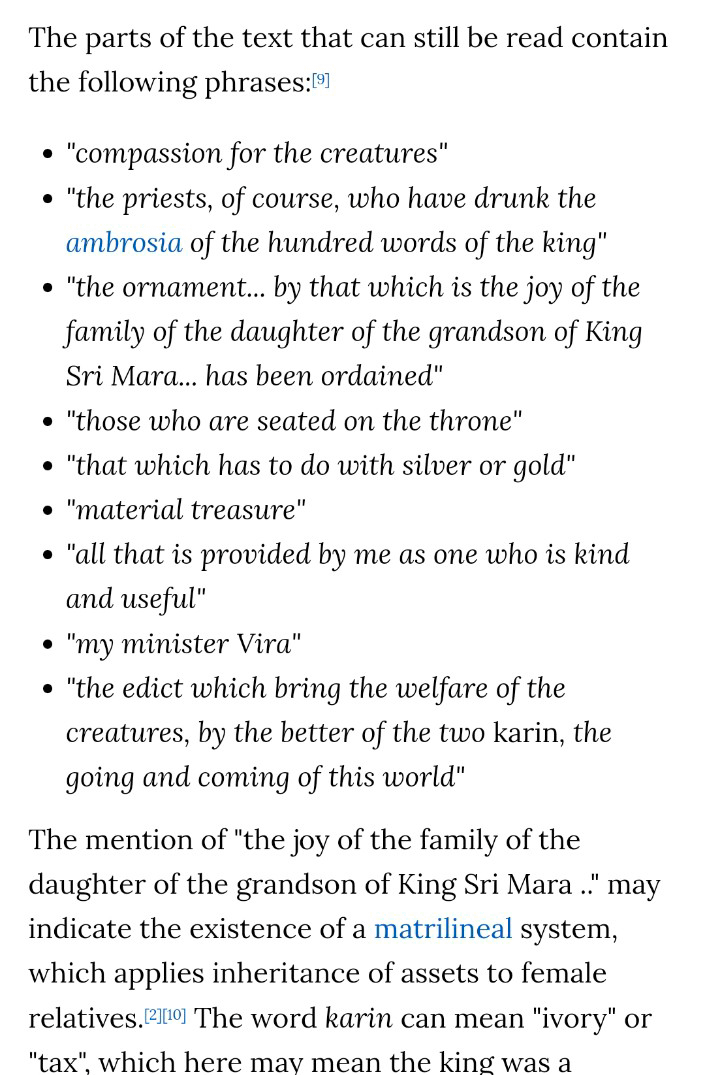
Yūpa Mulawarman (Hindu king) inscription in Indonesia written by Brahmins in Pallava Script, Borneo, Kutai, Indonesia, dated 4 century CE. This attests to the emergence of an Indianized state in the Indonesian archipelago.
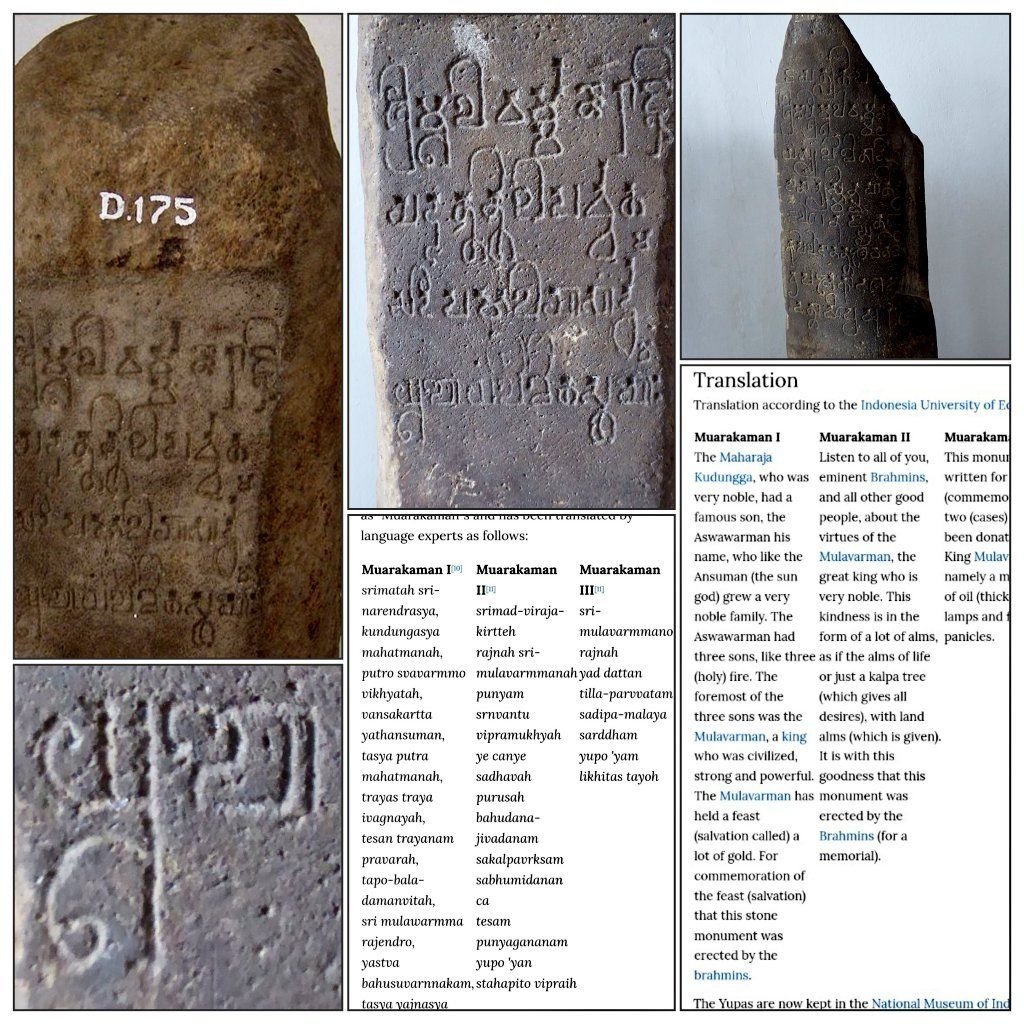
Kebon Kopi I also known as Tapak Gajah inscription (elephant footprint inscription), is one of several inscriptions dated from the era of Tarumanagara Kingdom circa 5th century. The inscription bearing the image of elephant footprint, which was copied from the elephant ride of King Purnawarman of Tarumanagara, which is equated with Airavata, the elephant vahana (vehicle) of Indra.
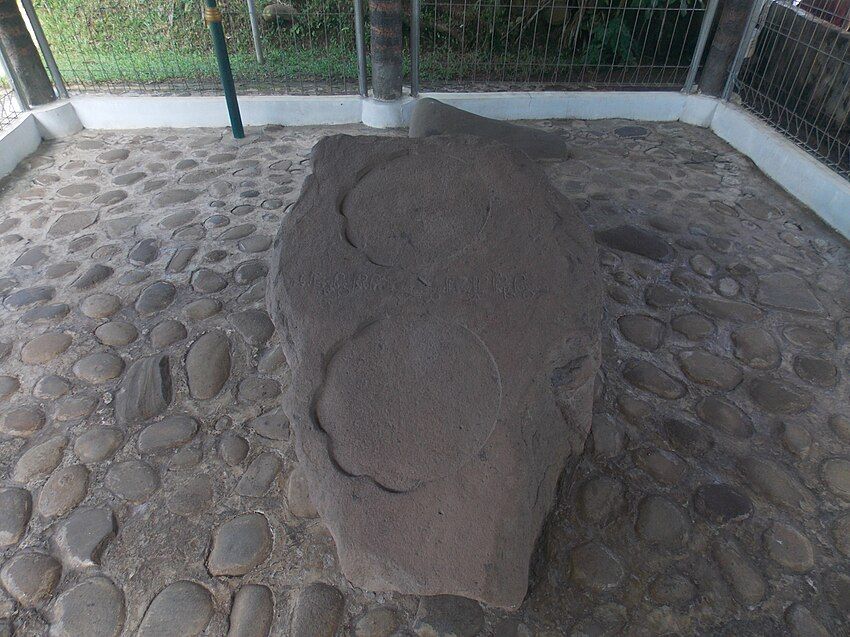
Tugu inscription in Pallava script in Sanskrit dates 5th century ce found in Batutumbuh hamlet, Tugu village, Koja, Indonesia. It describes hydraulic, irrigation and water drainage project of Chandrabhaga river by Rajadirajaguru. The inscription contains information about hydraulic projects; the irrigation and water drainage project of the Chandrabhaga river by the order of Rajadirajaguru, and also the water project of the Gomati river by the order of King Purnawarman in the 22nd year of his reign. The digging project to straighten and widen the river was conducted in order to avoid flooding in the wet season, and as an irrigation project during the dry season.
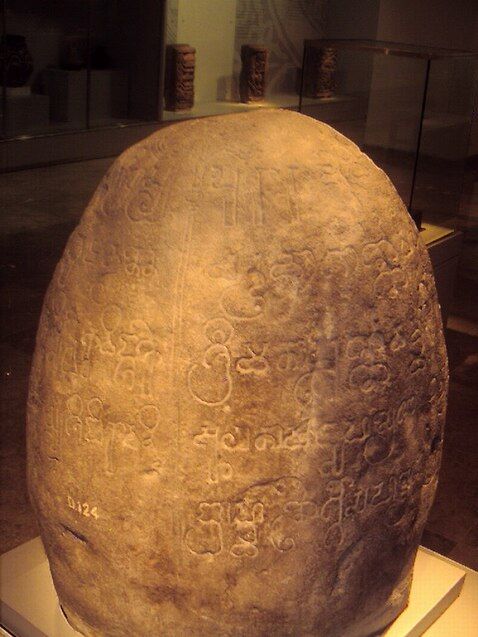
Cidanghiang inscription, also called Lebak inscription, from Tarumanagara kingdom, estimated to be from the 4th century CE, Banten, Indonesia. This inscription mentions a king named Purnawarman, who used the title vikrānta, which indicates that he was a worshiper of Lord Vishnu. It consists only of two lines, transliterated as follows:
vikranta ‘yam vanipateh prabhuh satyaparā(k)ra(mah)
narendrasya bhūtena śrīmatah pūrnnavarmmanah
This is the conqueror of the three worlds (with his three steps), his majesty King Pūrnavarman, the great king, the hero (and) to be the banner of all kings in the worlds.
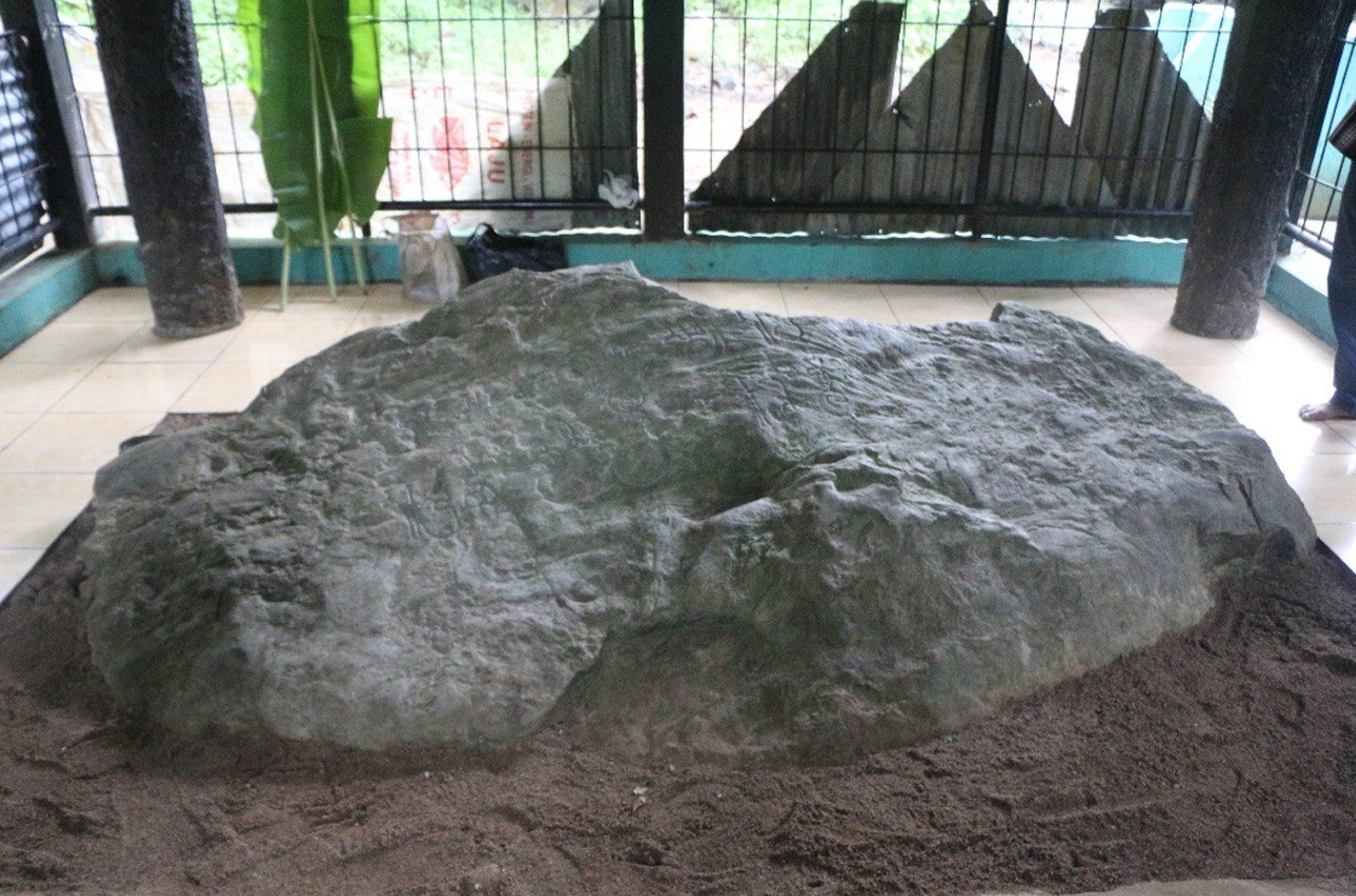
Prasasti Ciaruteun Inscription is 5th-century stone inscription discovered on the riverbed of Ciaruteun River, West Java, Indonesia. The inscription states King Purnawarman is the ruler of Tarumanagara (An early H!ndu Kingdom)
1vikkrāntasyāvanipateḥ2śrīmataḥ pūrṇṇavarmmaṇaḥ3tārūmanagarendrasya4viṣṇoriva padadvayam
The powerful illustrious and brave King, the famous Purnawarman (of the) Tarumanagara (kingdom) whose (print of the) foot soles are the same (as those of) God Vishnu.
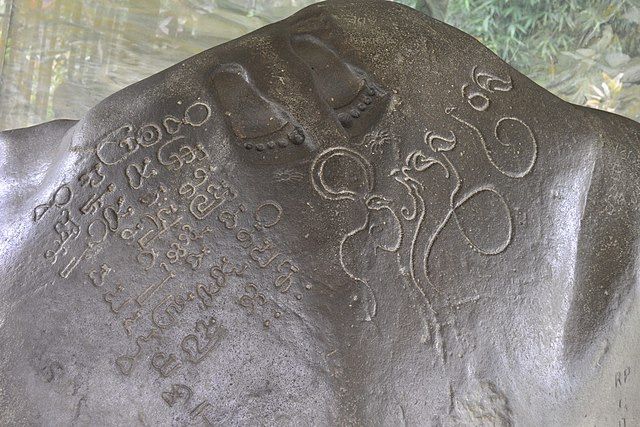
Sanskrit inscription in Early Pallava script on a stone lying on the Pasir kole-angkak hill, Jambu, to the west of Bogor, Indonesia C.5th century CE
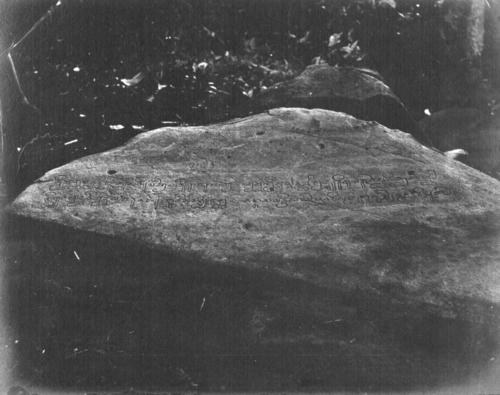
“Suvarnbhumi” “सुवर्णभूमि” found inscribed in ‘Sanskrit’ on a 7th century slab in Cambodia
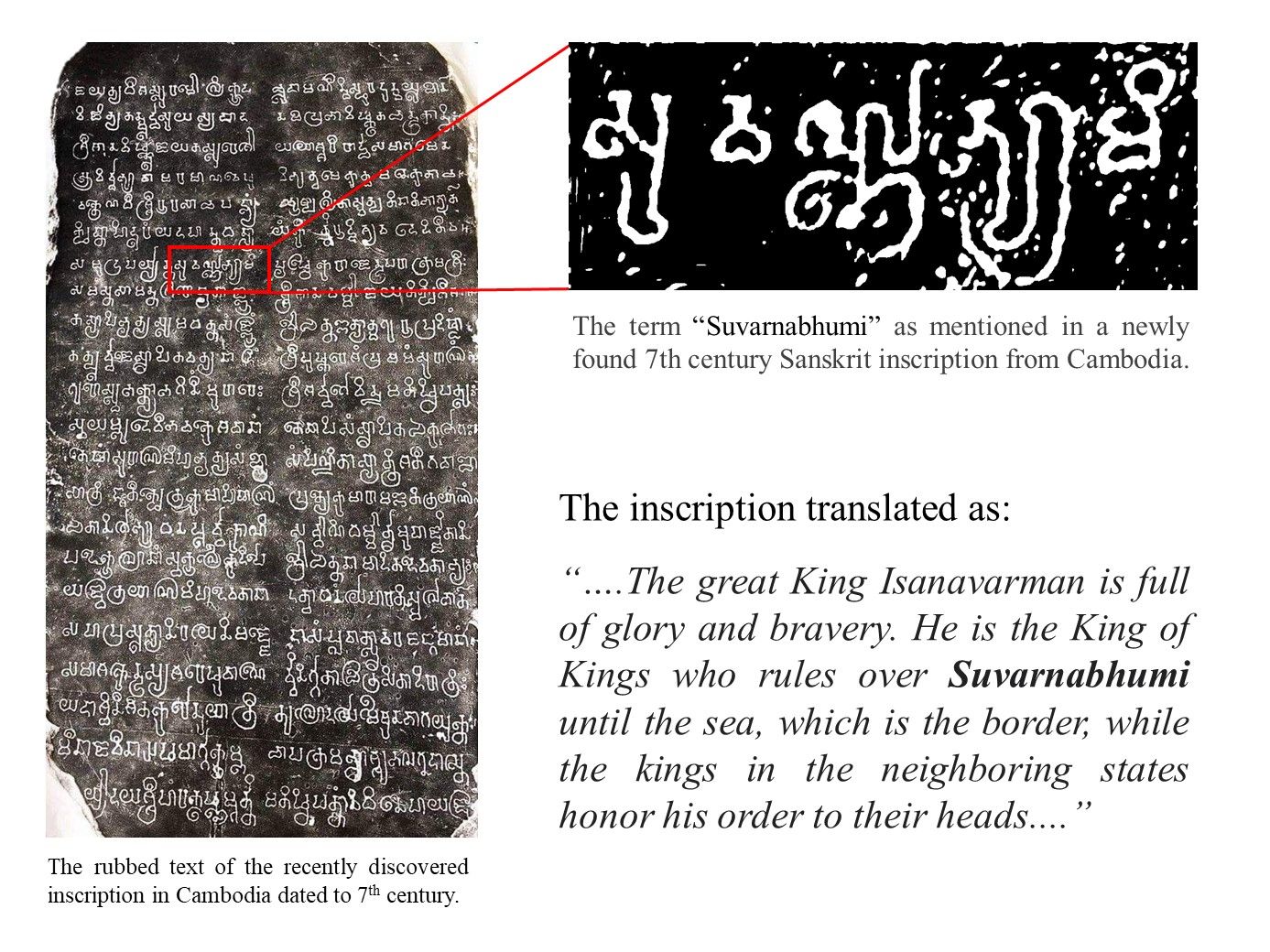
Indonesian non-royal Sanskrit inscription dating 7th century describing how Sankara fulfilled his promise to his father to house a Linga ‘representation of Shiva’
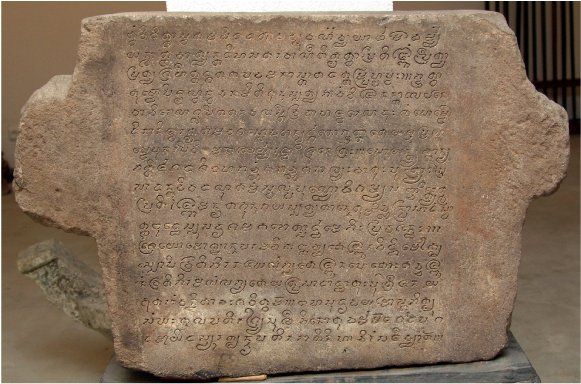
The Kalasan inscription is an inscription dated 700 Saka (778 CE) discovered in Kalasan village, Sleman Regency, Yogyakarta, Indonesia.
The inscription was written in Sanskrit with Pranagari script (Northern India). This is the first inscription discovered in Indonesia that mentioned the dynastic name of Sailendra as Sailendravamça. The inscription mentioned about Guru Sang Raja Sailendravamçatilaka (Teacher of the King, the Jewel of Sailendra family) that succeed to persuade Maharaja Tejapurnapana Panangkaran (in other part of the inscription also called as Kariyana Panangkaran) to construct a holy building for (Bodhisattvadevi) Tara and also build a Vihara (monastery) for Buddhist monks from Sailendra family’s realm. Panangkaran donated the Kalaça village to Sangha (Buddhist monastic community). The temple dedicated to Tara is identified as Kalasan temple.
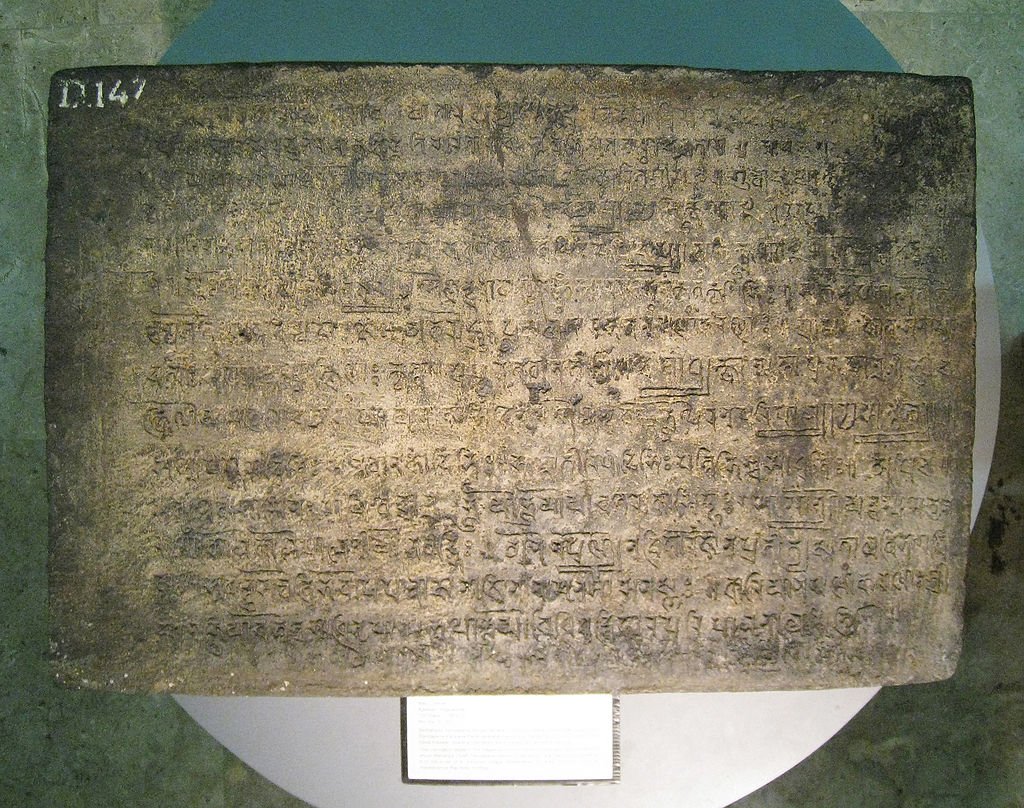
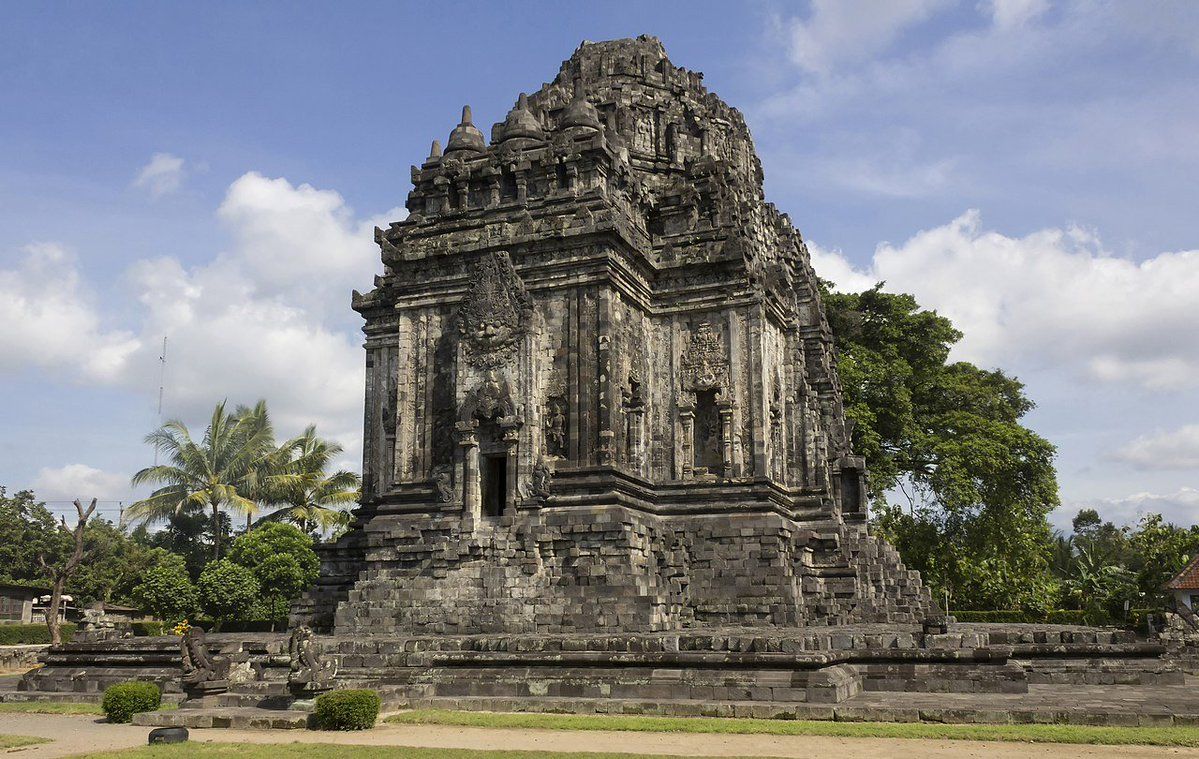
Engraved copper sheet of Harsavarman with Sanskrit inscription K.964 found in the ancient moat of U Thong, Thailand; Stone inscription in Sanskrit K.1155 found at Ban Phan Dung, Thailand c.7-8th century
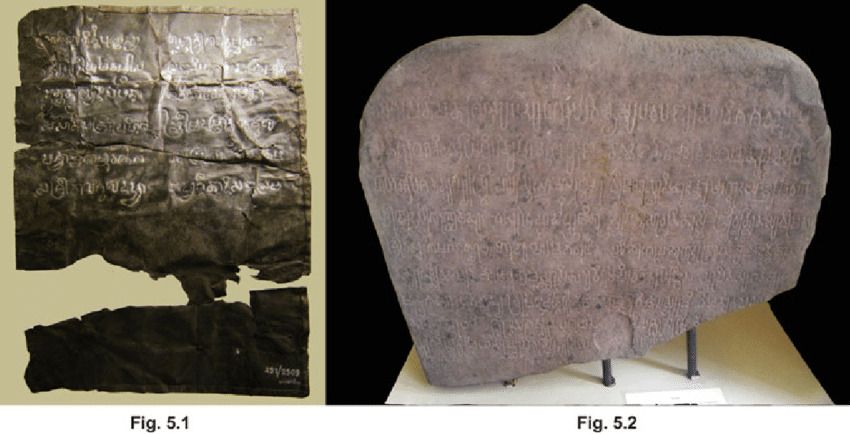
Ligor inscription is an 8th-century stone stele or inscription discovered in Ligor, Nakhon Si Thammarat, Southern Thailand Malay Peninsula written by Mahārāja dyāḥ Pañcapaṇa kariyāna Paṇaṃkaran, king of Shailendra dynasty
he information about a king named Visnu who holds the title Sri Maharaja, from Śailendravamśa (Wangsa Syailendra) hailed as Śesavvārimadavimathana (the slayer of arrogant enemies without any trace)
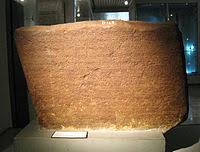
Sanskrit inscription found in Trowulan, Melang dating c.966 ce

Singapore Stone inscription written in Sanskrit 10th-13th century originally stood at the mouth of Singapore river to be blown by Britishers in 1843 to widen the river pathway.
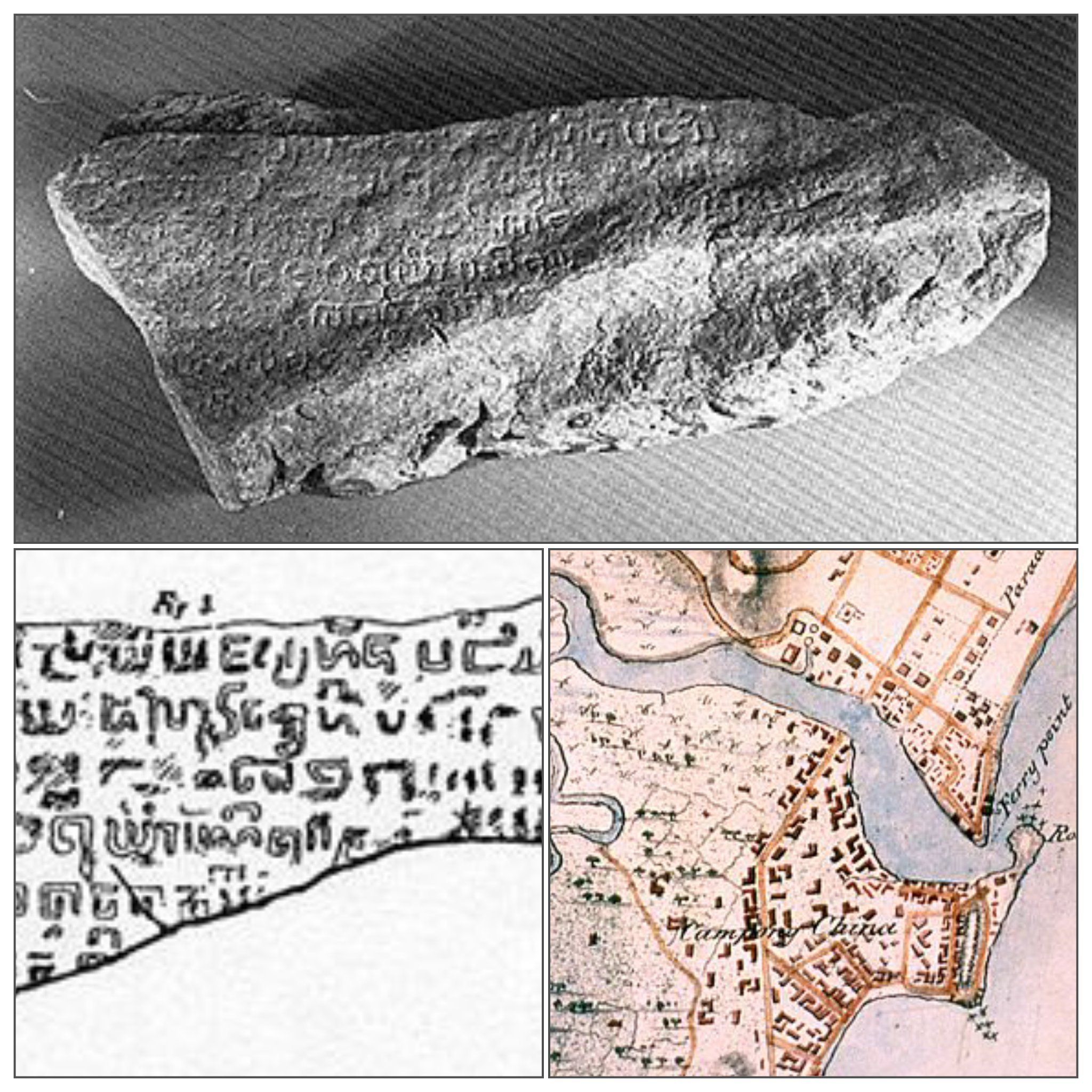
Few sanskrit writings found on pillars of Angkor Wat, Ta Nei, Kravan and Koh Ker temples Cambodia.
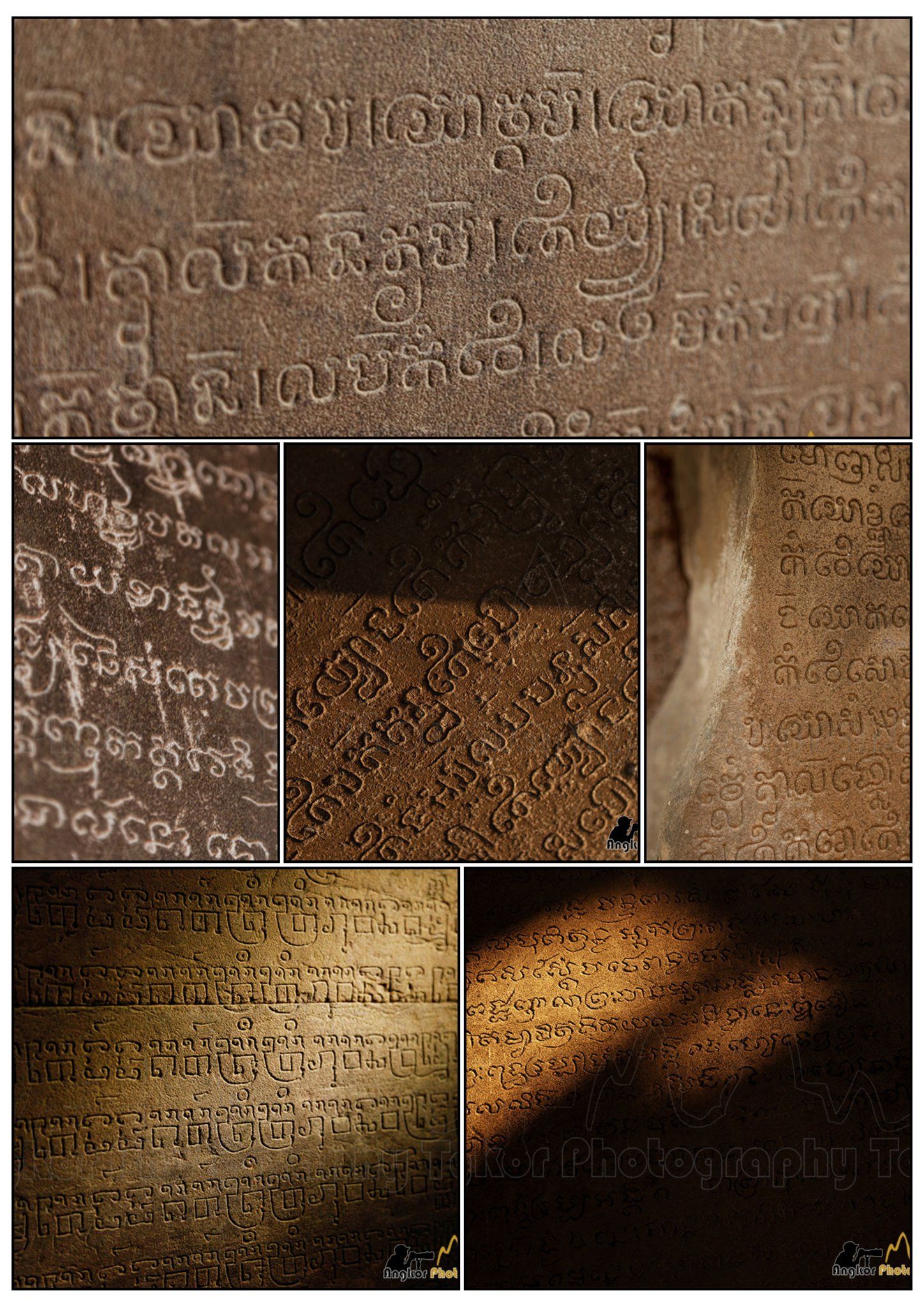
Sawlumin inscription is one of the oldest surviving stone inscriptions in Myanmar. The slabs were mainly inscribed in Burmese, Pyu, Mon and Pali, and a few lines in Sanskrit. Yhe stele was founded in 1079 by King Saw Lu of Bagan.
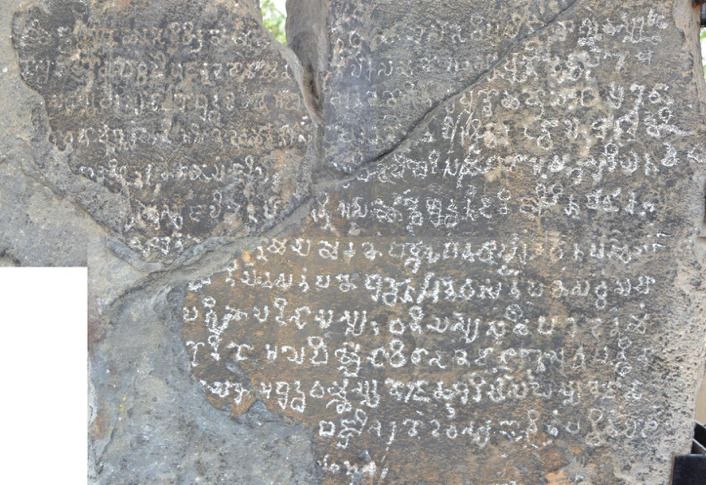
Sanskrit Inscription found in Brunei, a tiny nation on the island of Borneo, in 2 distinct sections surrounded by Malaysia and the South China Sea Brunei.
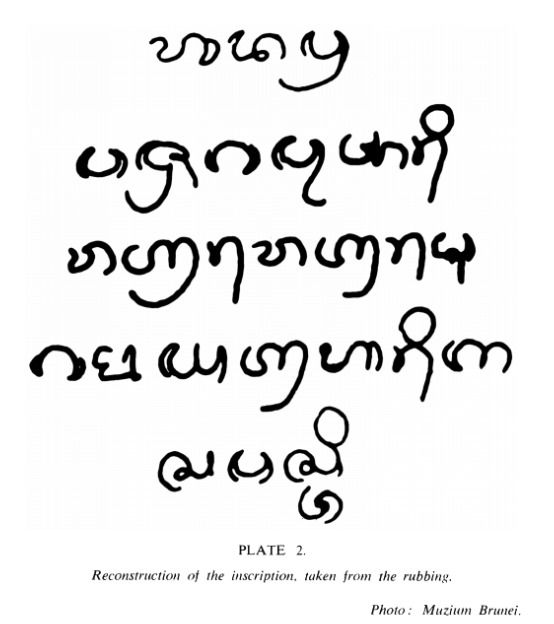
Buddhist took Sanskrit to china through silk route. This oldest discovered “printed item” in the world is found from China (757 CE). Buddhist Mantras for Goddess Pratisara, in Sanskrit language and Brahmi script, are printed on it.
